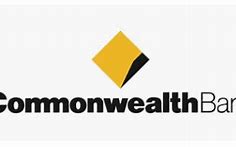Melbourne Nov13 (TIE)Commonwealth Bank of Australia has today launched a new monthly CommBank Household Spending Intentions (HSI) Index – an in-depth gauge of Australian consumer spending intentions.
The CommBank HSI Index combines analysis of the bank’s spending data (the largest consumer spending data set in Australia covering 2.5 million households and approximately 40 per cent of payments transactions) and loan application information, with Google Trends publicly available search activity. This combination of data provides a unique insight into current and future spending trends across 12 categories covering almost all consumer spending.
“We are incredibly proud to launch one of the most reliable leading indicators of Australian household consumption, one that’s backed by Commonwealth Bank’s world-class data and insights,” said Andrew Hinchliff, Group Executive of Institutional Banking and Markets.
“This powerful new tool will help businesses, industry and government better track our economy and understand developments in Australian household consumption,” he added.
“Our new CommBank HSI Index is a major improvement on existing consumer sentiment trackers, and brings timely and unparalleled insights to customers, media and policymakers,” said Stephen Halmarick, Chief Economist at Commonwealth Bank. “In time, we see this index becoming an important economic indicator for Australian financial markets.”
“After months of restrictions, Australians are finally free to spend again. The strong index reading for October underscores pent-up demand across the economy, particularly for lockdown-affected sectors such as travel, transport and household services. The data is showing that while lockdowns stymied some activity, the underlying economy remains strong and household spending intentions support a robust recovery,” Mr Halmarick said.


The travel spending intentions index posted the largest monthly increase, surging 52.7 per cent in October from September. Travel spending intentions were up 13.5 per cent from October 2020. The increase was driven by a more positive outlook on the future, with travel agents, airlines, cruise lines and motor home and RV rentals seeing a boost in spending intentions.
“Many people are searching for getaways or going for a quick break after so many months being cooped up at home, and with the Christmas just around the corner, some are also already planning that December vacation,” said Mr Halmarick.
The transport spending intentions index rose 20 per cent from September, but was down 1.5 per cent from October 2020. Spending increases on service and fuel stations, car washes, and taxi and limousine services, recorded during October, all point to the gradual reopening of the economy.
“As people get back to being out and about, they’re driving more, they’re keeping that car clean, and they’re also back to using transportation services like taxis and rideshare services,” Mr Halmarick said.
“But the weakness we’re seeing in rail and ferries, for example, suggests that people are still wary of mass transit due to residual COVID risks.”
The entertainment spending intentions index was up 14.7 per cent in October as the economy reopened, but fell 7.2 per cent from October 2020 as many venues remain subject to restrictions while others are still closed.
The household services index rose 24 per cent in October from September, and was up 5.5 per cent on the year. The increase was driven by both actual spending and Google searches for home and garden services and home improvement services.
Still, some spending sectors showed slight weakness in October. The home buying spending intentions index slipped 1.4 per cent from September, but was up 12.4 per cent from year-ago levels. While home loan applications rose in October, Google searches for property inspections and appraisals declined.
“Home buying spending intentions remain up on an annual basis and this sector continues to show strong demand among consumers for housing,” Mr Halmarick said.
The motor vehicle spending intentions index also slipped 1 per cent in October, as supply chain delays continue to dampen car sales. Still, car buying is up nearly 32 per cent from October 2020, in a sign of strong demand.
“One of the lasting impacts of COVID could be Australian household appetite for private transportation options, especially personal cars,” Mr Halmarick said.
“But due to global supply chain problems while the intent to buy a new car is there, that car may not be available from the dealership for quite some time.”
The CommBank HSI Index will be published on the second Tuesday of every month. To find out more visit www.commbank.com.au/hsi

